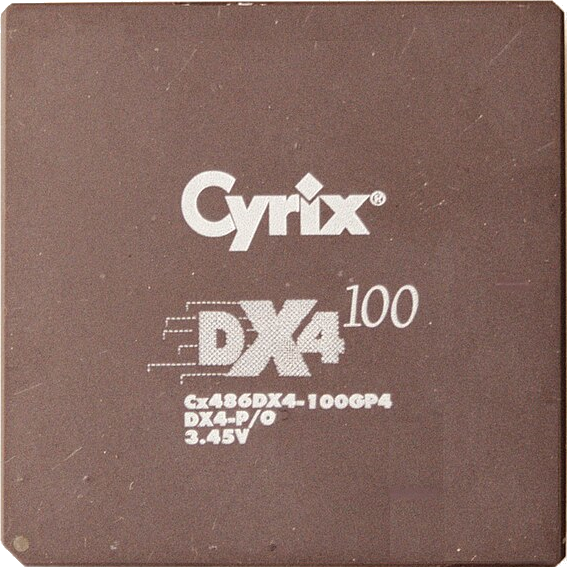Missed opportunity there, not being able to select all the other available USB-PD voltages. Not every circuit runs on 3.3 or 5 V.
Yeah, 9v at the very least, but 15V would be a useful option too.
I’m also just now realising USB-PD doesn’t spec for 12V which feels like an odd omission
Edit:
From the article:
Sure, it wouldn’t be much harder to add support the other voltages offered by USB-C Power Delivery, but how often have you really needed 20 volts on a breadboard? Why add extra components and complication for a feature most people would never use?
My friend, you write for hackaday, this is a weird take
Any sort of op-amp circuit would easily make use of a 15V input, or better yet using the full 20V with a 10V reference to get +/-10V voltage rails for an amplifier circuit.
That is a bit more expensive and complex. Looks like this is configured with a couple of resistors for 5v from USB which is simple to get and a voltage reg to drop down to 3v3 optionally. Full PD requires a chip and active negotiation for higher voltage levels. Though there are chips that do that it does increase the complexity and cost and soldering skills a bit. Might not be worth it if all you work on is 5v or 3v3.
If you look at the circuit diagram in their documentation linked from that article, that thing doesn’t even support USB-PD or even just the USB 1.0 device side of the negotiation to increase the current limit from the default (150mA in USB 3) to high (900mA in USB 3). It will look like it works fine if you connect it to a dumb USB power supply (because those thing don’t really do any USB protocol stuff, just dumbly supply power over USB connectors up to the power source’s limit) but if you connect it to, say, a PC USB port (which does implement the USB host side of the USB protocol), your circuit on the breadboard that worked fine when using a dumb USB power supply with that breadboard adaptor might not work because the current it needs exceeds that default 150mA limit for devices that haven’t done USB negotiation (worse if it’s a USB 2.0 port, as the limit is lower for those)
This thing is basically the same as the chinese power breadboard adaptors you can get in places like Aliexpress, but with a USB-C connector instead of a Type-A, micro-USB or mini-USB one, plus its better designed (it has a proper Buck Converter instead of a cheap Votage Regulator, plus better power supply filtering and a polyfuse to protect it and the host from current overdraws).
The headline and the article seriously exagerate this “achievement”.
Personally I just have an old micro USB cable I cut the end off of and soldered solid-core wire to. Just plug the USB-A end into a battery bank and the wires into the breadboard rails and you’ve got a stable 5V supply. I rarely needed 3.3V on a breadboard, but when I did I usually had a 5V to 3.3V voltage translator already on the board which was enough to get by.
Yes, there is not much going on on this board, but since those trigger boards with USB-PD functionality are so cheap these days, it should have been possible to add such a trigger chip. If you wanted to go the really fancy route you could even use PPS and allow for pretty much arbitrary voltages.
TL;DR - It’s a nice and pretty run of the mill breadboard power adaptor which happens to support USB-C connectors, but the article and its title insanely oversell the thing.
–
This is not exact as amazing an achievement as the headline implies since the necessary stuff to talk the to the USB PD host upstream is already integrated so you just need to get a chip that does it (and even without it, you’ll get 150mA @ 5V by default out of the USB 3 host upstream and up to 900mA with some pretty basic USB negotiation in a protocol that dates from USB 1.0 and for which there have long been integrated solutions for both the device and the host sides).
Further, the converting of those 5V to 3.3V just requires a buck converter or even just a voltage regulator (though this latter option is less efficient), for which there are already lots of integrated solutions available for peanuts and where the entire circuit block needed to support them is detailed in the datasheet for that converter.
Looking at the circuit diagram for this (linked to from the article), they’re not even doing the USB PD negotiation or any kind of USB 1.0 negotiation, so this thing will be limited to 150mA for a USB 3 host or whatever current your traditional USB power source can supply (as those power sources really just do power supply of whatever amperage they support over a cable which happen to have USB connectors, rather than including a genuine implementation of an USB host with current limiting depending on negotiation with the USB device, so such power sources don’t require the device to do any USB negotiation to increase the current limit above 150mA).
This is really “yet another run of the mill USB power breadboard adaptor” only the USB plug is USB-C rather than mini-USB or micro-USB (so, a different plug plus a handfull of minor components as per the standard of the circuitry to properly support it), so pretty much the same as the cheap chinese ones you can get from Aliexpress, though this one uses a Buck Converter rather than the $0.1 Voltage Regulator in most of the chinese boards, and actually does proper filtering of power supply noise and proper protection against over current, so it is a quality design for such things, though it’s not really a major advancement.
Without the USB PD stuff I wouldn’t really say that it brings USB-C Power to the breadboard (in the sense of, as many would expect, being able to draw a proper amount of power from a modern USB 3.0 power brick that supports USB-C), more something with a USB-C connector that brings power to the motherboard, as that connector is really the total sum of what it supports from the modern USB spec.
What would really be nice would be something that does talk USB-PD to the upstream host AND can convert down from the 20V at which it supplies peak power, so that you can take advantage of the juicy, juicy (oh so juicy!) capability of USB-PD to supply power (up to 100W right now, which will be up to 250W with USB 4), though if you’re pulling 100W (which at 5V means 20A, which is a stupidly high current that will melt most components in a typical digital circuit) from you breadboard power adaptor, then I’m pretty sure magic smoke is being released from at least one of the components on that breadboard and, by the way, you’re probably damaging the power rail of that breadboard (aah, the sweet smell of burnt plastic when you turn the power on for your half-arsed experimental circuit!!!)
Very cool. Open source too
Thats pretty sick!
This is spammy and there are already plenty of USB-C power conversion gadgets, e.g. on Adafruit. No crowdfunding needed.
That’s not what this is…this isn’t a breakout board or a development board. This is just straight up, drop-in power supply for bare breadboards. If you dont know what breadboards are….well…
I know perfectly well what breadboards are. I even remember the Continental Specialties brand. They have power supply strips, like the ones on the edges in this pic. You connect power there.
Tbf, these are slightly different things, the one in the OP hooks up to the standard power “rails” on a breadboard. You don’t need to buy a special one with markings specific to a pi or Arduino (or just learn the pin outs). OP’s also has the benefit of not taking up half a breadboard like your example.
Not saying more similar things don’t exist, but for the example you’ve given I think there’s significant enough differences for them to have distinct use cases.
Agree with what another comment said though in that it would be good to select for higher voltage than 5V.
You connect power there.
This device literally does exactly this, coming from a USB C connector.
This just isn’t general interest technology news, especially since it’s for a vaporware (crowdfunding) product. Might be ok on /arduino or something.
Here’s USB PD to 12 volts (other voltages available too), just wire it to the breadboard:
Hard disagree. What I find spammy in this community is all the Elon and Twitter garbage and business BS that isn’t about technology. Which is posted here daily
Edit it’s actually hourly
Whilst I agree with you in everthing but the first 2 words of your post, I think this is yet another “look at this cool gadget” post that overhypes something, and that is a kind of spam we get a bit of around here, even if nowhere near the levels of the Elon crap or even just US politics.
This is especially frustratingfor people who, like me, looked at the diagram they link from their article and found out it’s pretty much the same as a run of the mill breadboard power adaptor with a USB-C connector and a slightly better design than the cheap chinese ones, rather than something trully supporting USB-PD (this thing doesn’t even support the basic USB 1.0 negotiation needed to get more than 150mA when connecting to a proper USB host).
That the article then mentions a “crowdfunding campaign” for something that a junior EE can design with a bit of datasheet digging, carries a bit of a stink of a cash-grab, so seeing it as spam is understandable.




